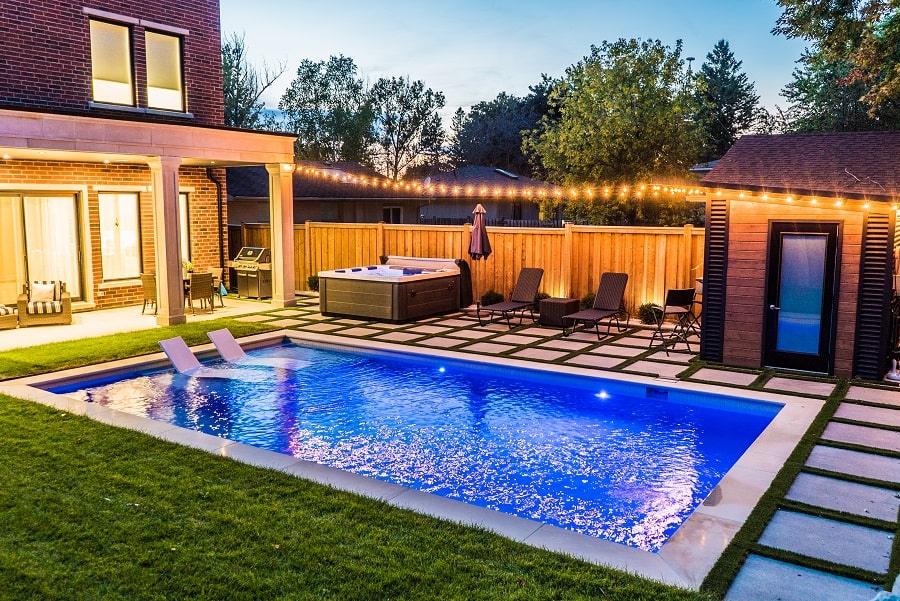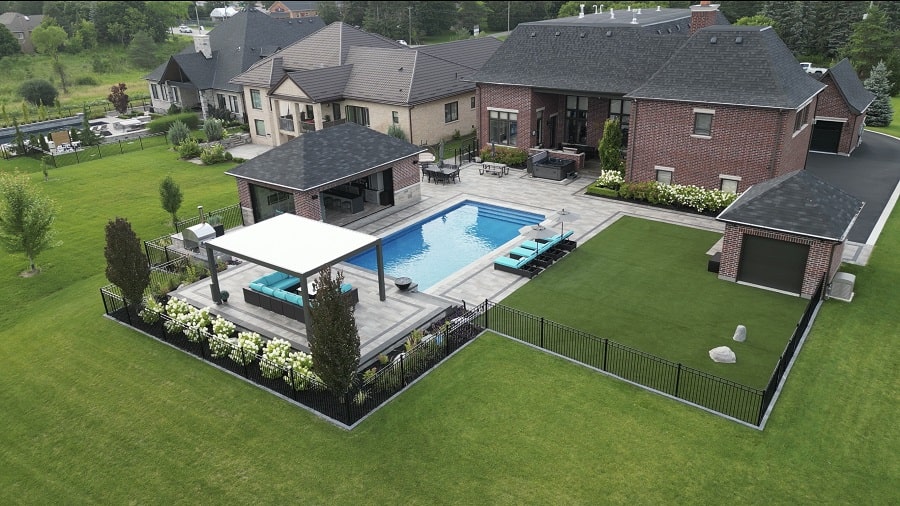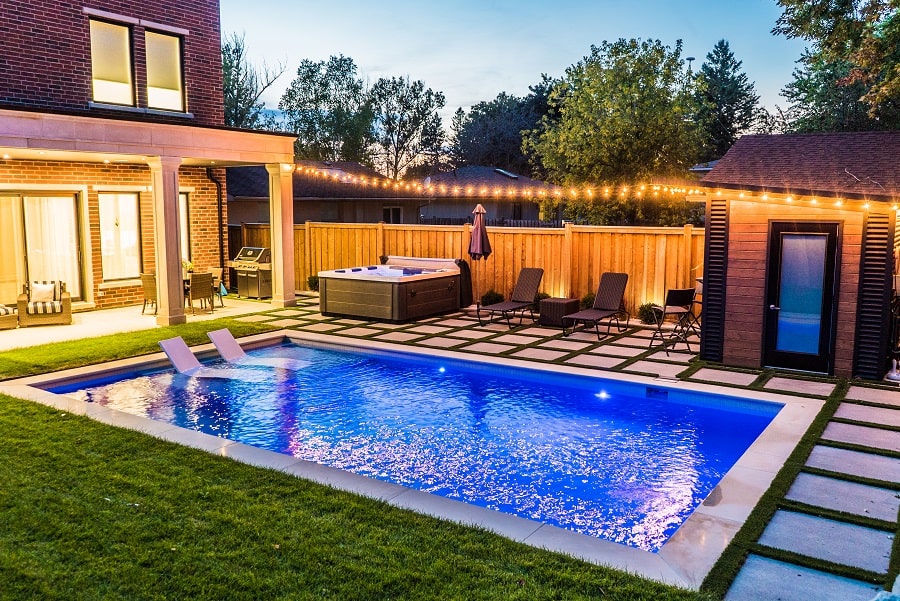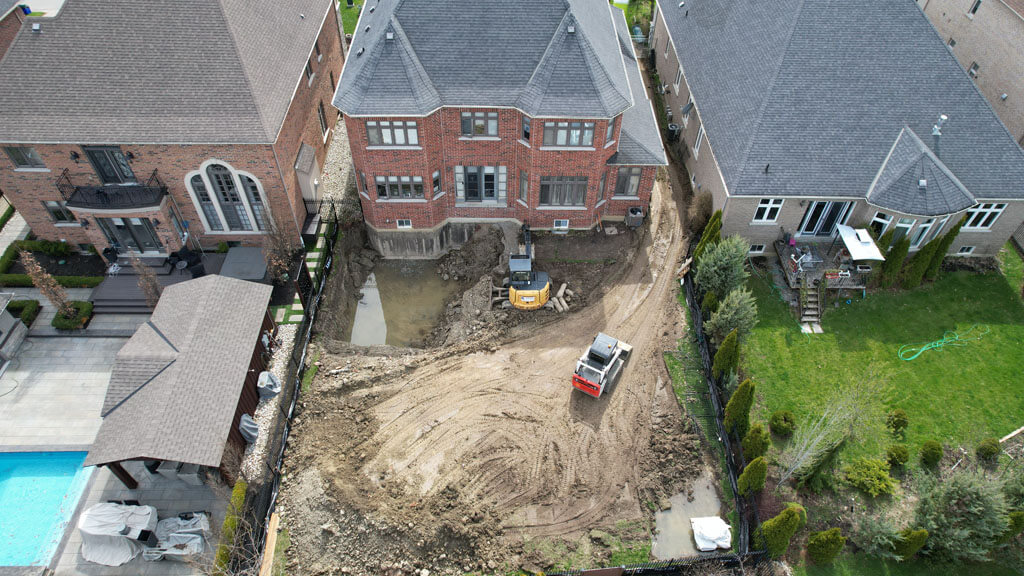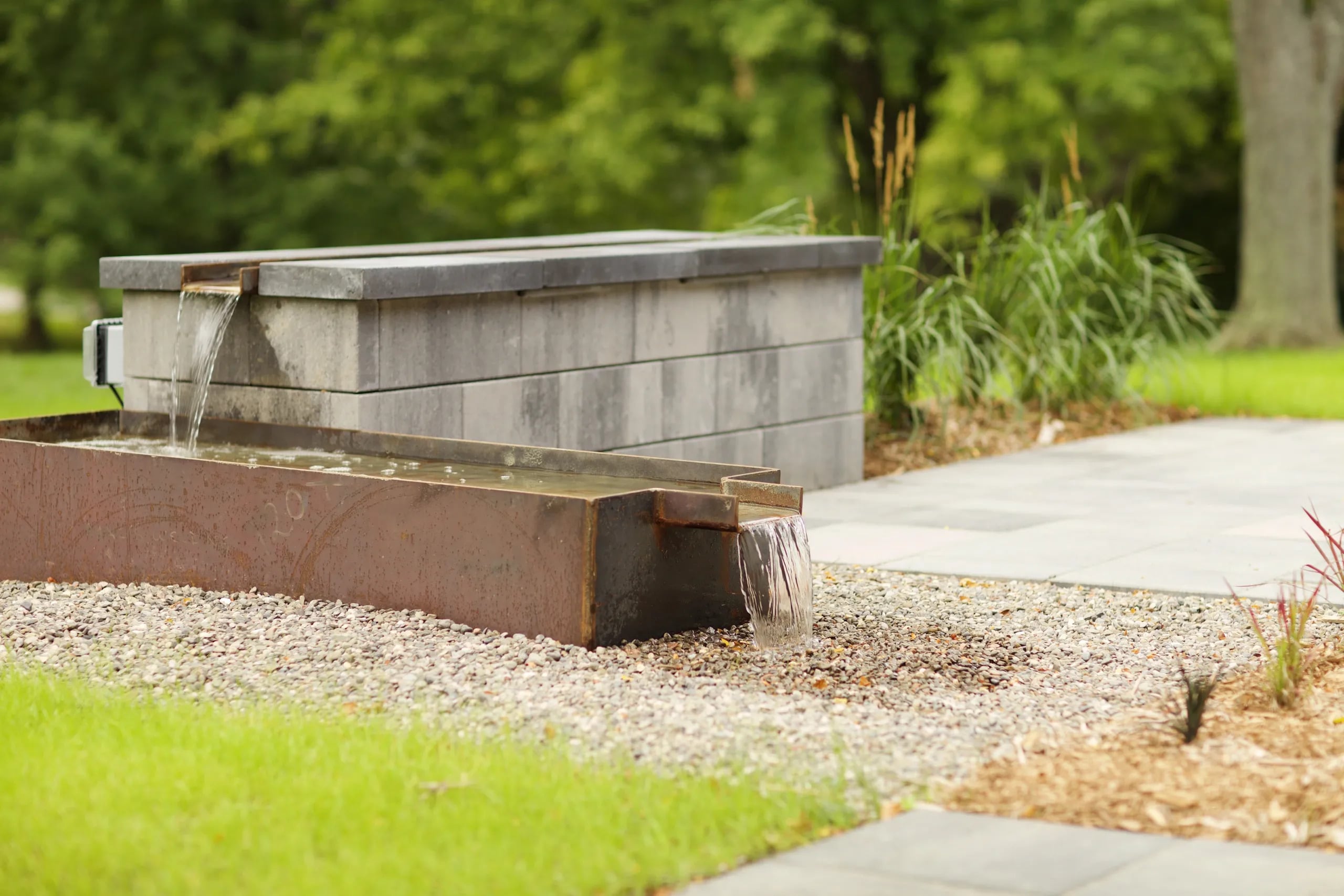Imagine a landscape that adapts intuitively to its environment where pathways follow natural drainage, gardens thrive with minimal water use, and outdoor lighting adjusts to ambient light automatically. This is no longer a futuristic imagination. It’s the reality of parametric landscape design.
For over 25 years, LandCon, a leading landscape design and build company in Toronto, has been at the forefront of crafting intelligent, sustainable, and breathtaking outdoor spaces. With multiple industry awards to our name, we’ve witnessed how technology has revolutionized the art and science of landscaping.
Parametric design represents the next great leap — merging creativity with computation, craftsmanship with data. In this guide, we’ll explore how algorithms and environmental insights are redefining landscape design, why it matters for property owners in southern Ontario, and how LandCon’s expertise ensures your outdoor space is beautiful and built for the future.
What Is Parametric Landscape Design?
Parametric landscape design is an advanced design approach that uses mathematical and environmental data to create outdoor environments. Instead of relying solely on sketches and static blueprints, this method employs algorithmic modelling where specific parameters (like sunlight, topography, or water flow) determine how the design evolves.
In simpler terms, it’s about letting data guide design decisions. For example, suppose your backyard in Toronto faces heavy runoff during spring. In that case, a landscape designer can use parametric tools to model water flow patterns and adjust the grading or planting plan accordingly.
This level of precision leads to landscapes that are not just visually pleasing but also optimized for performance, sustainability, and longevity.
The Evolution of Landscape Design in Toronto
Over the past two decades, Toronto’s landscape design scene has undergone a profound transformation. What was once an industry focused mainly on visual beauty such as symmetry, colour palettes, and formal arrangements, has evolved into one that merges art, ecology, and technology. Today, landscapes are not just designed to please the eye but to perform, adapt, and sustain.
This shift mirrors Toronto’s own growth. As one of North America’s most rapidly developing cities, the city faces the challenge of balancing dense urban living with accessible, resilient green spaces. Designers now integrate innovative technologies, local ecology, and community needs into their projects, making outdoor environments beautiful and beneficial.
From Art to Science
Landscape design was once driven almost entirely by artistic intuition. While creative flair remains central, today’s process is deeply informed by data and interdisciplinary collaboration. Environmental science, engineering, and computational modelling have become as crucial as colour and composition.
Before construction begins, designers simulate environmental conditions like rainfall absorption, soil permeability, temperature fluctuations, and vegetation growth. This approach ensures that every feature, from a rooftop garden to a backyard oasis, performs efficiently within its ecological context. It’s a balance of creativity and precision that defines the modern Toronto landscape.
Adapting to Urban Complexity
Toronto’s diverse terrain, variable climate, and high population density demand flexibility and innovation. Designers must consider not only space limitations but also urban runoff, snow management, and sustainability targets.
Parametric design tools allow firms like LandCon to test multiple scenarios and make evidence-based decisions. Whether optimizing courtyard airflow in a condominium project or designing stormwater systems for a suburban estate, data-driven modelling helps balance aesthetic goals with ecological responsibility.
The Human-Centric Shift
Despite the rise of advanced modelling tools, the core mission of landscape design remains human-centred. Outdoor spaces are extensions of how people live, work, and connect.
Parametric design enhances this by enabling micro-level personalization. Designers can optimize for comfort zones, improve privacy screening, reduce heat exposure, and even predict how users will move through space. A backyard patio, for instance, can be oriented to capture morning sun while minimizing afternoon glare — all determined through precise digital simulation.
How Parametric Design Works in Landscaping
Let’s take a closer look at how LandCon applies these principles in practice.
1. Site Data Collection
Every project begins with a deep understanding of the site. Using drones, GIS mapping, and environmental sensors, the team gathers data on soil composition, slope, sunlight exposure, drainage, and wind flow. This information forms the scientific foundation for design decisions.
2. Defining Parameters
The collected data becomes the project’s “parameters” — measurable factors that influence layout, material choice, and vegetation. These might include:
- Minimum and maximum sunlight hours
- Prevailing wind direction and speed
- Water flow and retention capacity
- Local plant hardiness zones
- Human traffic and usage patterns
3. Algorithmic Modelling
Advanced software like Rhino, Grasshopper, and Autodesk processes these parameters to generate design variations. The algorithm evaluates thousands of options and narrows them to those that meet functional and aesthetic goals. For example, LandCon might analyze how a deck’s position affects privacy from neighbouring lots while maintaining optimal shade and drainage.
4. Real-World Simulation
Each design iteration is tested against real-world conditions. The software predicts seasonal sunlight, stormwater behaviour, and even how mature trees will cast shadows years down the line. This foresight helps avoid costly design oversights later.
5. Construction Integration
Once finalized, digital models are translated into exact construction blueprints. LandCon’s field teams use this data to ensure precision, minimize waste, and guarantee that the built result matches the virtual vision.
Why Parametric Design Is Revolutionizing.Landscape Architecture
Parametric design is more than a digital convenience. It’s reshaping the way landscapes are imagined and maintained.
1. Smarter Sustainability
As climate variability intensifies, resilient landscapes are essential. Parametric tools allow for efficient irrigation, improved stormwater management, and plant selection that supports native biodiversity — all tailored to Toronto’s unique conditions.
2. Reduced Human Error
By relying on data-driven algorithms, designers eliminate many of the guesswork elements inherent in manual planning. The result is more accurate layouts, fewer revisions, and smoother approvals.
3. Enhanced Aesthetic Creativity
Contrary to the belief that technology stifles creativity, parametric design expands it. Designers can push artistic boundaries, experimenting with geometry, elevation, and texture, while ensuring every element serves a functional purpose.
4. Cost and Time Efficiency
Testing multiple configurations digitally reduces project time and material waste. Clients benefit from faster decision-making, transparent visuals, and cost-effective execution.
5. Resilient Outdoor Spaces
Parametric modelling anticipates Toronto’s challenging winters, ensuring durability against freeze-thaw cycles, snow buildup, and erosion. The result is landscapes that retain their beauty and purpose year after year.
Applications of Parametric Design at LandCon
1. Residential Projects
For homeowners, parametric design means customization at its best. Whether designing a pool, garden, or outdoor kitchen, LandCon uses environmental data to tailor every detail from sunlight direction to privacy walls.
For instance, a home in Richmond Hill might use parametric mapping to position a pergola that provides optimal shade during peak summer without blocking winter sunlight.
2. Commercial Landscaping
Parametric design excels in commercial landscaping, where large-scale planning and precision matter. It ensures accessibility, safety, and efficient resource management for business complexes, schools, or retail spaces.
3. Pool Design and Integration
Many pool design companies now incorporate parametric modelling to simulate reflections, water temperature zones, and wind exposure ensuring energy efficiency and comfort.
4. Urban Green Infrastructure
As Toronto expands, so does the need for sustainable urban green spaces. Parametric design supports city planning initiatives by optimizing biodiversity, stormwater management, and heat island reduction strategies.
The LandCon Advantage: Blending Experience with Innovation
While many firms experiment with parametric tools, LandCon’s strength lies in integrating them seamlessly into our proven design-build workflow.
With over 25 years of experience, we’ve mastered the balance between high-tech modelling and the human touch that makes each design feel personal.
Our Unique Approach
- At LandCon, we believe technology should enhance creativity, not replace it. Our unique approach combines decades of on-the-ground experience with the precision of modern digital tools. This fusion ensures that every Toronto landscape we design is not only visually captivating but also practical, resilient, and emotionally engaging.
- Data-Driven Creativity: Each project begins with a deep dive into site data — soil composition, topography, sunlight patterns, and more. But data is just the starting point. Our designers interpret that information to craft spaces that feel natural and human. Whether it’s a family backyard, a rooftop terrace, or a commercial courtyard, we balance technical precision with warmth and personality.
- Sustainability First: Environmental responsibility is built into every phase of our process. We select locally sourced, low-impact materials and design systems that reduce water waste, energy consumption, and maintenance. From drought-resistant planting schemes to permeable paving and rainwater harvesting, sustainability isn’t an afterthought, it’s the framework that guides our decisions.
- Integrated Design-Build Model: Unlike many firms that separate design and construction, LandCon operates under a unified design-build structure. Our in-house construction team collaborates closely with designers from day one, translating digital models into flawless, real-world results. This integration eliminates communication gaps, minimizes delays, and ensures every project stays true to its original vision, right down to the smallest detail.
- Award-Winning Portfolio: Our commitment to innovation and quality has earned recognition throughout southern Ontario. LandCon’s projects have been featured in industry publications and have received multiple awards for design excellence and environmental leadership. These accolades reflect more than just aesthetic achievement. They highlight our role in setting new standards for sustainable and data-informed landscape design.
What truly sets LandCon apart is how we blend artistry and analytics. While technology allows us to predict, measure, and optimize, it’s our creative insight that transforms those findings into living spaces where people want to gather, relax, and connect. The result is a landscape that performs as beautifully as it looks, designed for today’s world and adaptable for tomorrow’s.
How Toronto Property Owners Benefit
For Toronto homeowners and developers, the advantages of parametric landscape design reach far beyond surface beauty. These data-driven landscapes are built for longevity, efficiency, and livability, offering measurable returns on investment.
- Higher Property Value: A well-designed outdoor space boosts both curb appeal and functional value. By aligning design with environmental data, properties maintain visual appeal and usability throughout the seasons, increasing resale potential.
- Personalized Comfort: Every detail from seating placement to shade coverage is customized to your site’s microclimate and how you use the space, creating outdoor areas that feel natural and effortless.
- Lower Maintenance Costs: Smart drainage, optimized irrigation, and native plant selections reduce water use and maintenance hours. The landscape essentially manages itself more efficiently over time.
- Future-Proof Design: With Toronto’s climate and infrastructure constantly evolving, parametric modelling ensures adaptability. Landscapes can accommodate future technologies, weather changes, and sustainability standards without requiring a complete redesign.
The Future of Landscape Design: AI and Predictive Modelling
As technology advances, parametric design will integrate more deeply with artificial intelligence (AI). Soon, landscapes will self-adjust. Irrigation systems will respond to weather forecasts, lighting will adapt to circadian rhythms, and maintenance schedules will be auto-generated based on data.
At LandCon, our goal is to stay ahead of these innovations, ensuring Toronto property owners always benefit from the latest advancements in outdoor design and sustainability.
Frequently Asked Questions
1. How does parametric design improve traditional landscape design?
It enhances traditional landscape design by integrating data-driven insights. Instead of relying solely on intuition, designers use environmental data to create efficient, sustainable, and visually balanced outdoor spaces.
2. Is parametric landscape design suitable for small Toronto properties?
Absolutely. Parametric tools are scalable and can optimize even compact city yards for sunlight, privacy, and space utilization. A landscape designer in Toronto can tailor these techniques to any property size.
3. What technologies are used in parametric landscape design?
Tools like Rhino, Grasshopper, and GIS mapping systems allow Toronto landscape designers to model, simulate, and refine layouts before construction begins.
4. How much does parametric landscape design cost in Toronto?
Costs vary depending on project scale, site complexity, and customization. However, it often saves money in the long run through reduced maintenance and efficient resource use.
5. Why choose LandCon for landscape design projects?
Because LandCon combines cutting-edge design technology with decades of on-ground experience. Every project reflects our passion for precision, sustainability, and long-term beauty.
Conclusion
Parametric landscape design is not just the future, it’s the present. By merging algorithms, environmental data, and human creativity, property owners in Toronto can achieve landscapes that are smarter, more sustainable, and uniquely personal.
LandCon’s expertise ensures that this innovative approach doesn’t remain abstract but becomes a tangible transformation, shaping outdoor spaces that respond intelligently to nature, people, and time.
Your property deserves more than a standard layout. It deserves a landscape that adapts, evolves, and inspires.
Transform Your Landscape in Toronto with LandCon’s Expertise
At LandCon, we combine cutting-edge design tools with over 25 years of award-winning experience to create landscapes that are not only breathtaking but also efficient and enduring. Whether you’re a homeowner dreaming of a serene backyard retreat or a business seeking impactful commercial landscaping, our team delivers results that stand the test of time and climate.
Let’s turn your outdoor space into a masterpiece of form, function, and innovation.
Contact LandCon today to schedule your design consultation and discover how we can reimagine your property with data-driven precision and timeless artistry.




